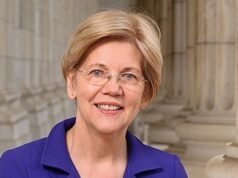Department of the Interior: Yakima Water Plan Is a “Model” and “Holistic”
Deputy Secretary Michael Connor: The Yakima plan and process “is a model not just for working through watersheds challenges, but for any natural resource management [issues].”
Washington, D.C. – (RealEstateRama) — Yesterday, U.S. Senator Maria Cantwell (D-Wash.), ranking member of the Senate Energy and Natural Resources Committee, asked the Department of the Interior about its commitment to the Yakima River Basin during a hearing on the president’s FY 2017 budget request. Deputy Secretary of the Interior Michael Connor agreed with Sen. Cantwell that the Yakima River Basin plan “is a model for the rest of the nation in water management.” Connor called the plan “holistic” and further explained that the Yakima process is “a model not just for working through watershed challenges…for any natural resources management [issues].”
Watch Sen. Cantwell’s opening statement here.
Last July, Sen. Cantwell introduced a bill to advance these successes in the Yakima River Basin to address long-standing water challenges and ensure water security in the Basin in the years to come. The Yakima Basin in the state of Washington is one of the most productive agricultural regions in the West, producing 60 percent of the apples and 77 percent of the hops grown in the United States. The basin was also once home to some of the most productive salmon fisheries in the region, stretching from headwaters in the Cascade Mountains out to the Pacific Ocean.
Sen. Cantwell’s bill, S. 1694, would usher in a new era in water management in the basin by authorizing an integrated approach to balancing the needs of both humans and the environment across the watershed. The bill will help restore ecosystems and endangered species; conserve and move water to where it is most needed and provide water security for families, fish and farmers over the long-term.
The president’s FY 2017 budget proposes $15.8 million for projects in the Yakima Basin, which is an increase of $3 million over FY 2016. This funding increase is critical to completing work on a fish passage project at the Cle Elum reservoir, which will reopen salmon runs that have been blocked for more than a century. This project, which is included in the bill, would help to restore one of the largest sockeye salmon runs in the continental United States.
Trout Unlimited published a new blog post in support of the bill and plan, noting that it includes “a balanced package of actions that will restore hundreds of thousands of salmon and steelhead to the basin, improve water quality and quantity, and support a healthy agricultural and recreational economy.” Trout Unlimited also highlighted that the administration’s budget proposal for FY 2017 is a “significant funding boost [that] will help ensure that meaningful progress is made on key components of the cooperative Yakima Basin Integrated Plan.”
During the hearing, Sen. Cantwell questioned Interior Department officials on the importance of cooperative and integrated planning for water management. Deputy Secretary of the Interior Michael Connor responded, calling the plan a model for natural resources management:
“The Yakima Integrated plan, that process, is a model – not just for working through watershed challenges, but for any natural resources management [issues]. … It’s the right process to bring folks together in a holistic and realistic manner and decide on a path forward that addresses – in this particular situation – water supply, environmental needs, tribal responsibilities, etc.”
Sen. Cantwell urged continued funding for watershed management activities in the Yakima River Basin and for extending this model to water and drought planning across the West. Deputy Secretary Connor noted:
“In just a three- or four-year period, I think we have close to doubled the budget for Yakima enhancement activities and we have put in additional resources in the 2016 spending plan.…We’d like to take the Yakima model on to other basins. We’ve expanded in this budget our cooperative watershed program – doubled it to try and help fund local watershed groups and build relationships.”
The bill represents a collaborative approach and hard-won compromise between conservation, recreation, agricultural and municipal interests, the Yakama Nation, the state of Washington and the federal government. Since the bill’s introduction last summer, Sen. Cantwell has continued to work with these groups and other community members to refine the bill. After a public hearing in November, the bill passed on a bipartisan basis out of the committee for consideration by the full Senate.


















